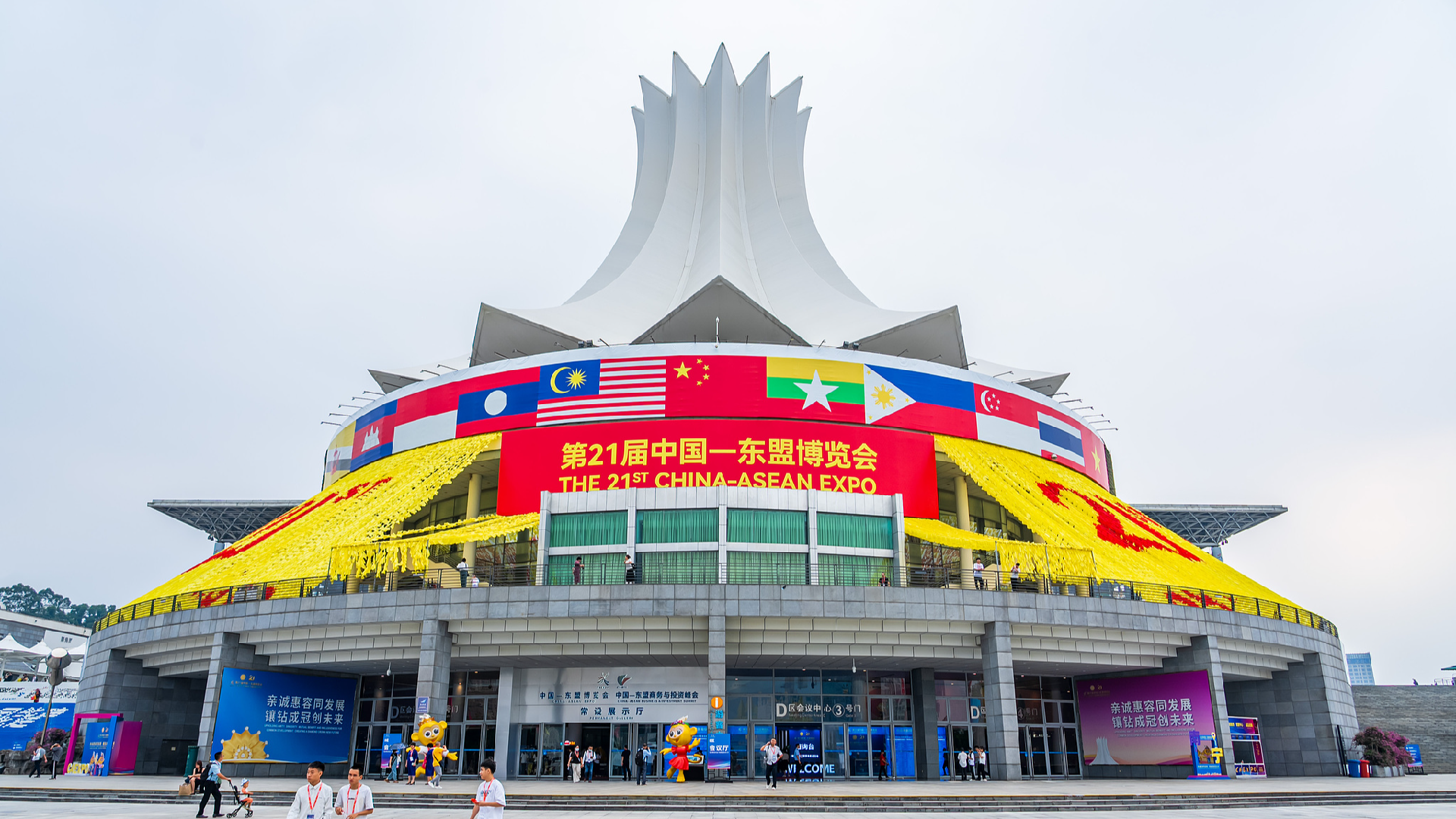New Focus on Digital and Green Economy in China-ASEAN Collaboration
China and ASEAN will collaborate to enhance cooperation in the digital and green economy, aiming to expedite the green transformation of social development.

China and the Association of Southeast Asian Nations (ASEAN), sharing geographical proximity, are not only neighbors who assist each other but also strong partners engaged in mutually beneficial collaboration. In recent years, trade between China and ASEAN has both increased in volume and improved in quality. From January to July of this year, bilateral trade between the two regions constituted 15.8 percent of China's total foreign trade, exceeding China-EU trade by 2.8 percentage points and China-U.S. trade by 4.8 percentage points.
Since 2020, ASEAN has been China's largest trading partner, while China has held the position of ASEAN's largest trading partner for 15 consecutive years. Amid a global trend toward green and low-carbon development, the two sides are expanding their industrial cooperation beyond traditional sectors like infrastructure, energy, mining, and textiles into emerging areas such as the digital and green economies. This shift marks a new focal point in China-ASEAN relations.
The digital economy sector is witnessing strong demand and delivering notable outcomes from China-ASEAN cooperation. The Asian Development Bank reports that as of 2022, nearly 70 percent of the over 670 million people in ASEAN countries were internet users. The e-Conomy SEA 2023 report, published by Google, Temasek, and Bain & Company, shows that Southeast Asia's digital economy generated $100 billion in revenue in 2023, an eightfold increase since 2016. Notably, e-commerce, tourism, transportation, and media were responsible for 70 percent of this revenue.
Since the introduction of the "Digital Silk Road" in 2017, China has entered into memoranda for bilateral e-commerce cooperation with ASEAN nations such as Indonesia and the Philippines. Brands in e-commerce and logistics like Tmall Global, Taobao, and Cainiao have made significant strides to establish a presence in Southeast Asia. Looking ahead to 2024, based on the progress in digital collaboration, China and ASEAN countries signed the "Memorandum of Understanding between ASEAN and China on Cooperation in Communications and Digital Technology," adopted the "ASEAN-China 2024 Digital Work Plan," and agreed to jointly develop the "China-ASEAN Initiative on Facilitating Cooperation in Building a Sustainable and Inclusive Digital Ecosystem." These initiatives outline a clear direction for future cooperation in the digital economy. China aims to utilize its expertise in digital economy development, artificial intelligence applications, and 5G technology to foster pragmatic and mutually beneficial partnerships with ASEAN in areas like information communication and technology connectivity, digital infrastructure, cybersecurity, data security, and the development of AI and digital talents.
In the green economy, both China and ASEAN share aligned visions and promising prospects for collaboration. ASEAN's "Green Recovery" initiative aligns well with China's "Green Silk Road" development concept. In 2022, China's National Development and Reform Commission and other departments issued the "Opinions on Jointly Promoting Green Development of the Belt and Road Initiative," which outlined cooperation plans in key areas for the green development of this initiative and supported ASEAN in executing its "Green Recovery" program. Chinese electric vehicle manufacturers such as BYD and Neta have begun to expand into Southeast Asia, while sectors like lithium batteries, photovoltaics, and new materials are emerging as essential fields for green economic cooperation between China and ASEAN.
Furthermore, both parties are poised to explore various high-tech cooperative projects, with substantial investments and significant potential to promote industrial development. Building on this foundation, collaboration will extend into areas such as eco-agriculture, eco-industries, eco-tourism, environmental protection industries, green services, green finance, and green infrastructure development. These efforts will create greater opportunities for China and ASEAN to enhance their cooperation in the green economy, accelerate the green transformation of social development, and forge new pathways for sustainable development.
Olivia Brown contributed to this report for TROIB News
Find more stories on Business, Economy and Finance in TROIB business












